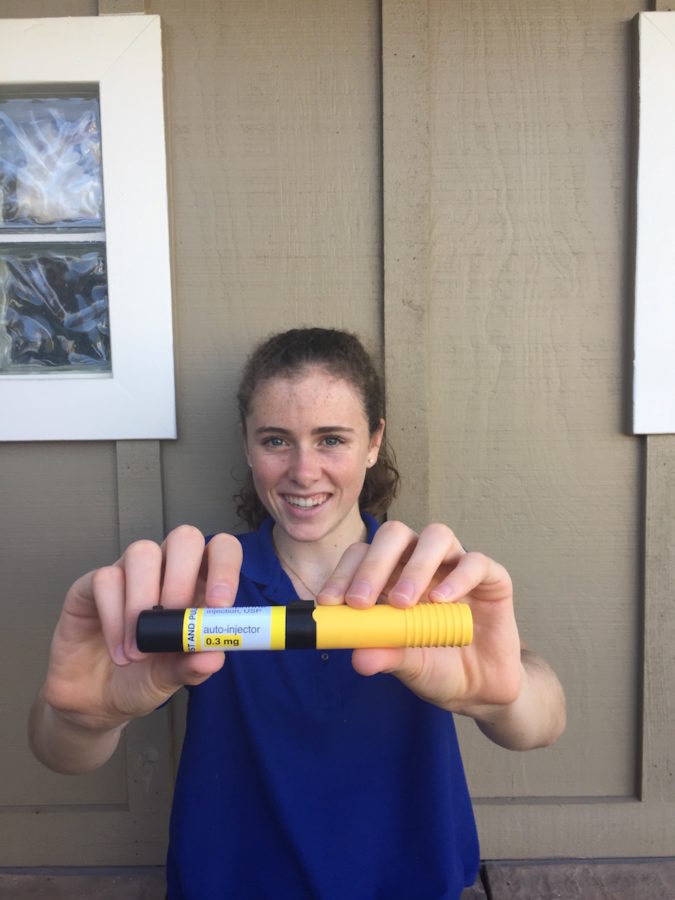The Recent Price Increase in EpiPens
The constant thought of having a severe allergic reaction chains you down with fear constantly. Having to carry around an EpiPen everywhere for fear of contact with common objects such as a peanut, dog hair or a bee sting is a part of daily life. This is the life that many allergy sufferers face without a choice.
Since I was a toddler, I have been told that I have a severe allergic reaction to tree nuts. An inadvertent taste of a nut could be enough to cause my throat to swell shut. With my EpiPen always in tow and having a constant awareness of the food I eat, I have learned to cope with this setback. Although fortunately a rare event, the medicine in an EpiPen, epinephrine, can be a lifesaver when an anaphylactic reaction occurs. Up to this point, having to buy an EpiPen was a reasonable cost. However, with the recent rate hikes, the price of an EpiPEn is beyond reach for many people.
With a quick shot of epinephrine to the outer thigh, the EpiPen reverses the side effects of an allergic reaction that include swelling of the airways, fainting, vomiting, and more. Currently, the EpiPen produced by the company Mylan is the only anti-allergen device on the market, but this could be changing in the near future.
Mylan has substantially marked up the price of its well-known antiallergic product which, in turn, is causing an uproar among allergy sufferers. According to well.blogs.nytimes.com, “Mylan, the pharmaceutical company, acquired the decades-old product in 2007, when pharmacies paid less than $100 for a two-pen set, and has since been steadily raising the wholesale price. In 2009, a pharmacy paid $103.50 for a set. By July 2013 the price was up to $264.50, and it rose 75 percent to $461 by last May. This May the price spiked again to $608.61, according to data provided by Elsevier Clinical Solutions’ Gold Standard Drug Database.” This data explains that the price of this allergy-saving device has increased substantially from under $100 for a two-pack in 2007 to $608.61 in May 2016. The price hikes have become progressively worse over the past few years but are now hitting an all-time high.
What does this mean for allergy sufferers? Well, going into the start of a new school year, many parents have been outraged about the recent price hike. Doctors advise patients to have at least two EpiPens for school, home, office, etc which can easily amount to a huge out of pocket expense. In addition, the EpiPens expires annually and requires replacement yearly as a result. Many parents and patients are faced with the fact of not being able to afford the lifesaving device.
As a tree-nut allergy sufferer myself with an EpiPen always in a nearby radius, I can understand why people are upset. I think that well.blog.nytimes.com described it best when talking to Ms. Shulman, a mother of an adolescent girl: “For the first time in 10 years, Ms. Shulman said she briefly considered forgoing the purchase, but didn’t want to risk it. ‘It’s very wrong,’ she said. ‘It’s gouging parents about their children’s lives. It’s not like letting them sniffle. It’s life or death.” Severe allergy sufferers absolutely need this lifesaving device.
Some say that the price of EpiPens is getting out-of-control, and I totally agree. Mylan is a perfect example of a monopoly, and the effects of it are taking over the market. It should not cost over $600 for a simple lifesaving device that is necessary for all severe allergy sufferers and costs only a fraction of this to produce. Having an allergy can be a medical and social burden and, with the cost of the life-saving medicine rising several fold, the treatment is now out of reach for many. Now the real question is, will there be another company to come out with a cheaper version of the EpiPen in the near future? I, as well as many other people, hope so.




